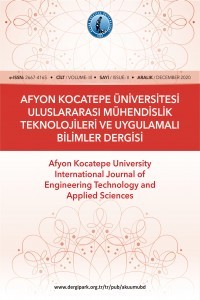Tarımsal Atık Takviyeli Kompozitler: Sürdürülebilir Bir Çevre İçin Bir Çözüm
Tarımsal atıklar veya tarımsal atıklar, çiğ tarım ürünleri yetiştirildiğinde ve işlendiğinde elde edilen artıklardır. Tarım ürünleri sebze, meyve, et, mahsul, kümes hayvanları ve süt ürünlerini içermektedir. Her yıl ortaya çıkan tarımsal atıkları tahmin etmek zor ancak kuşkusuz tarımsal atık, tüm dünyada üretilen toplam atık maddesinin önemli bir bölümünü oluşturmaktadır. Bu makale, büyük miktarda tarımsal atık miktarını ve yeni kompozit malzemelerin ve diğer uygulamaların sentezlenmesinde rasyonel bir şekilde faydalanarak etkin bir şekilde nasıl yönetilebileceğini incelemektedir. Sadece bu büyük miktardaki tarımsal atığın elden çıkarılması sorununu çözmez, aynı zamanda sürdürülebilir çevre için bir çözüm sunar. Tarımdaki herhangi bir gelişmeye, daima farklı tarım yöntemleri ve işleme teknikleri tarafından üretilen atıklar eşlik eder. Tarımsal atıklar ekimde kimyasalların yaygın olarak kullanılması ve tarımsal atıkların yakılması veya toprağın doldurulmasıyla irrasyonel bertarafı nedeniyle de kullanılır. Çevreyi ve toprağın verimliliğini kötü etkiler. Bu yazıda ayrıca, daha güçlü, daha hafif ve düşük maliyetli olan ve çeşitli endüstriyel uygulamalar için kullanılabilen, matriks olarak Alüminyum ile metal matriksinin kompozit haline getirilmesinde takviye malzemesi olarak bir tarımsal atık Pirinç kabuğunun uygulanması anlatılmaktadır. Kompozitler karıştırma teknikleriyle sentezlenir ve yapısal özellikleri için XRD, SEM ve optik mikroskopi ile karakterize edilir. Pirinç Kabuğu Külü, takviye malzemesi olarak ağırlıkça% 3'lük Alüminyum metalinden alınmıştır. Sertlik, Young modülü gibi mekanik özellikler de Vicker’ın Sertlik test cihazı kullanılarak değerlendirilmiştir.
Anahtar Kelimeler:
Tarımsal atık;, Prinç Kabuğu;, Metal Matrils Kompozit;, Karıştırma döküm tekniği, XRD;, SEM
Agro Waste Reinforced Composites: A Solution For Sustainable Environment
Agro- wastes or agricultural wastes are the residuals obtained when raw agriculture products are grown and processed. The agriculture products include vegetable, fruits, , meat, crops, poultry and dairy products. Its difficult to estimate the agriculture waste arising every year but undoubtedly agro waste constitutes a significant volume of the total waste matter generated in the entire world. This article reviews the huge amount of agro waste and how it can be managed effectively by making rational use in synthesizing novel composite materials and other application. It not only solves the major problem of disposal of this huge amount of agro-waste but also offers a solution for sustainable environment. Any development in agricultural is always accompanied by wastes generated by different farming methods and processing techniques. Agro waste is also generated because of extensive use of chemicals in cultivation and irrational disposal of agro waste by burning or land filling. It badly affects the environment and the fertility of the soil. This paper also describes the application of an agro –waste Rice husk as reinforcement material in making metal matrix composite with Aluminium as matrix which is stronger, lighter and low cost and can be used for various industrial applications. The composites are synthesized by stir cast techniques and characterized by XRD, SEM and optical microscopy for their structural properties. The Rice Husk Ash was taken as 3% wt of the Aluminium metal as reinforcement material. The mechanical properties like Hardness, Young’s modulus etc are also evaluated using Vicker’s Hardness tester.
Keywords:
Agrowaste;, Rice husk;, Metal matrix composites;, Stir cast technique;, XRD;, SEM;,
___
- Abubakar, M.S., Ahmad, D. (2010) Pattern of Energy Con- sumption in Millet Production for Selected Farms in Ji- gawa, Nigeria,” Australia Journal of Applied Sciences, 4, 4, 665-672.
- Agamuthu, P, (2009). Challenges and opportunities in Agrowaste management: An Asian perspective. Inaugural meeting of First Regional 3R Forum in Asia 11 -12 Nov., Tokyo, Japan. Ates,S., Ni Y., Tozluoglu, A., (2008) Characterization and Evaluation of Paulownia Elongata as a Raw Material for Paper Production,” African Journal of Biotechnology, 7, 22, 4153-4158.
- D. Wang, D., Sun, X.S.,Low, (2002) Density Particle Board from Wheat Straw and Corn Pith, Journal of Industrial Crops Product, 15, 1, 43-50.
- H. S. Yang, H., S., Kim, H. J., Park, H. J., Lee J, Hwang,T.S.,(2006).Water Absorption Behaviour and Mechanical Properties of Lignocellulosic Filler—Polyolefin Bio-Com- Posites, Journal of Composite Structures, 72, 4,429-437.
- Laad, M., Jatti, V.K., (2015). Investigation into the effect of Aluminium powder on Mechanical, Tribological and Electrical properties of Al-ABS composites Wseas, Transactions on Applied and Theoritical Mechanics, 10, 47-53.
- Laad, M., Jatti, V.S., Yadav, S. (2015), Comparative Study between SiC between Al 64430 metal matrix composites and RHA reinforced Al64430 metal matrix composites, Advanced Materials Research, 1119, 234-238.
- M. R. Dominique, M.R., Georget, D.M.R., Elmoneim,O., A. E. O. Elkhalifa, A.E. Q., Beltom, P.O., (2012). Structural Changes in Kafirin Extracted from a White Type II Tannin Sor- ghum, Journal of Cereal Science, 57, 48, 2012, pp. 106-111.
- Panthapulakkal, S., Sain, M., Law, S.(2005). Enhancement of Processability of Rice Husk Filled High Density Polyeth- ylene Composites Profiles, Journal of Thermoplastic Composite Material, 18, 5, 445-459.
- Tsai,W.T., Chang, C.Y., Lee, S.L.,(1998) A Low Cost Absorbent from Agricultural Wastes Corn Cob by Zinc Chloride Activation, Journal of Biotechnology, 64, 34, 211-217.
- Zurina,M., Ismail H., Bakar A.A., (2004) Rice Husk Filled Powder Polystyrene/Styrene Butadiene Rubber Blends,Journal of Applied Polymer Science, 81, 63, 2004, pp. 742-753.
- Yayın Aralığı: Yılda 2 Sayı
- Başlangıç: 2018
- Yayıncı: Afyon Kocatepe Üniversitesi
Sayıdaki Diğer Makaleler
Küresel Bombeli Basınçlı Kap Analiz ve Tasarımı
Hasan Huseyin OZKAN, Safa OZHAN, Garip GENC
Mobil Haberleşme Combo Antenleri için Genişband Elektromanyetik Sönümlendirici
Niyazi ULUAYDIN, Şaban Selim ŞEKER
Tarımsal Atık Takviyeli Kompozitler: Sürdürülebilir Bir Çevre İçin Bir Çözüm
Vildan ÖZKAN BİLİCİ, İsmail Hakkı SARPÜN, Mehmet Selami KILIÇKAYA
Portable magnetic nanoparticle spectrometer
Yeşim AKYÜREKLİ, Cengiz AKAY, Elif UZAK, Adem TUNÇDAMAR
Mehmet ÇAKMAKKAYA, Şükrü TALAŞ, H. Andaç YASAN, M. İskender EROĞLU
